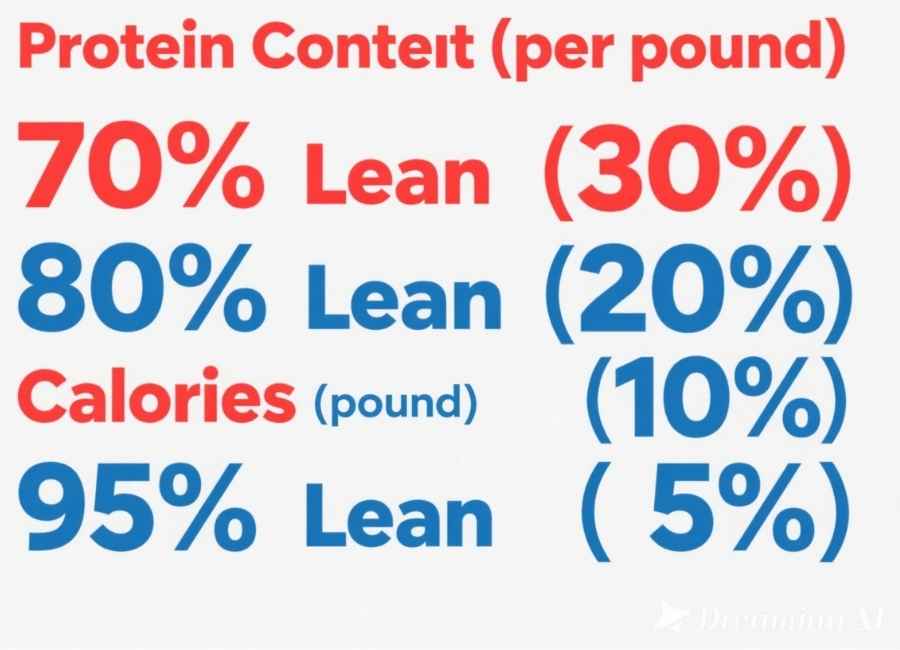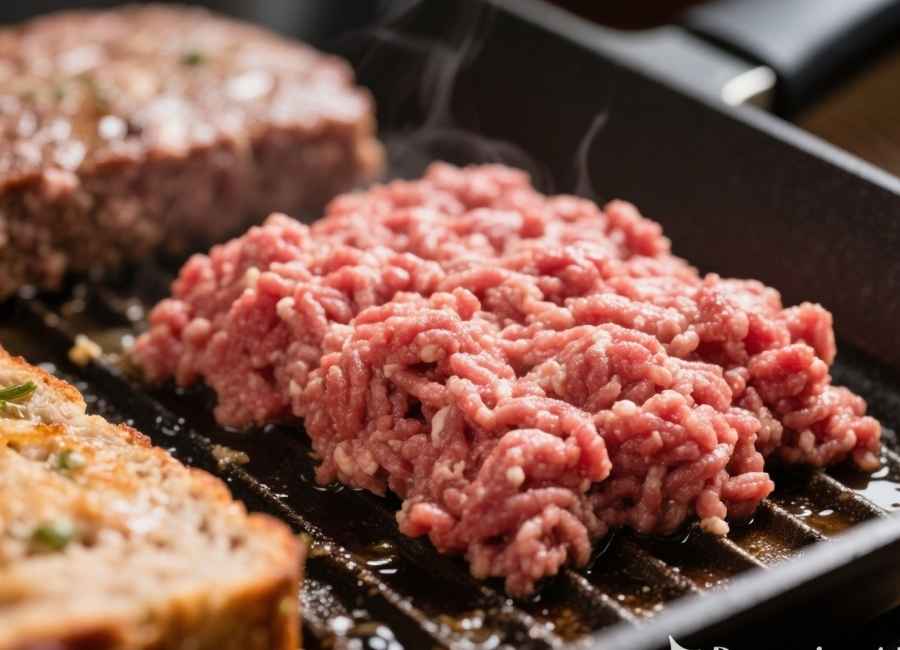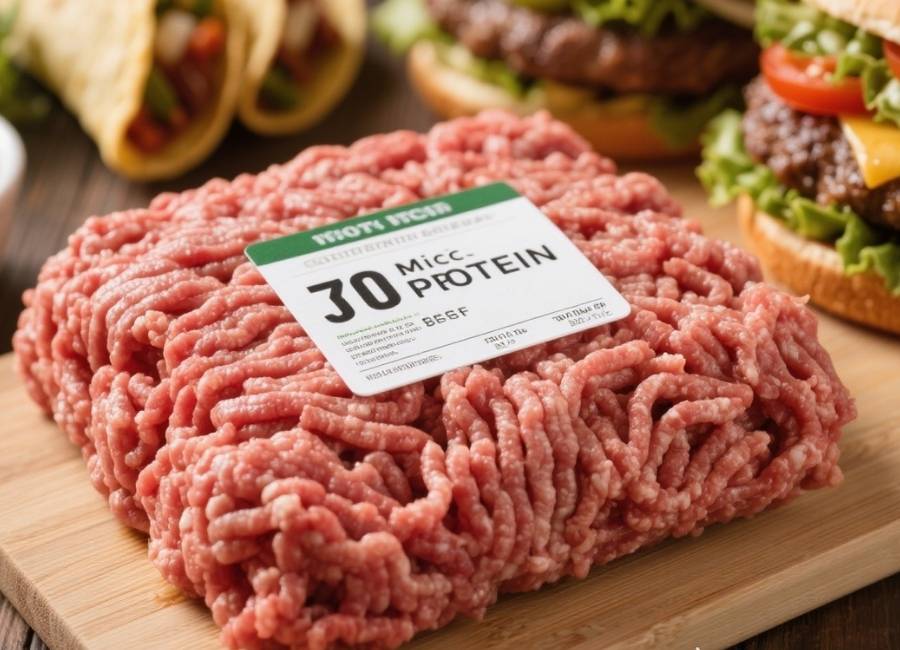Ground beef is a kitchen favorite, known for its versatility and taste. From hearty tacos to juicy burgers, it’s a quick and satisfying protein option for many. But if you’re keeping an eye on your diet or looking to hit specific nutritional goals, you might be wondering just how much protein you’re getting in a pound of ground beef.
This guide will break down the protein content in a pound of ground beef, discuss factors like fat content and cooking methods, and give you tips for using ground beef to meet your protein needs. Whether you’re a fitness enthusiast tracking macros or simply curious about what’s on your plate, you’re in the right place.
The Protein Content in a Pound of Ground Beef

The exact protein content in a pound of ground beef can vary depending on the fat percentage. Here’s a breakdown of common ground beef varieties and their approximate protein values:
- 70% lean (30% fat)
- Protein Content (per pound): ~77g
- Calories (per pound): ~1,200 calories
- 80% lean (20% fat)
- Protein Content (per pound): ~83g
- Calories (per pound): ~960 calories
- 90% lean (10% fat)
- Protein Content (per pound): ~88g
- Calories (per pound): ~720 calories
- 95% lean (5% fat)
- Protein Content (per pound): ~92g
- Calories (per pound): ~640 calories
Generally, the leaner the ground beef, the higher the protein content and the fewer fat calories per ounce. All of the above options are excellent sources of protein, but the choice will depend on your nutritional needs and taste preferences.
Why Fat Affects Protein Content
The fat percentage in ground beef plays a significant role in determining the calorie and protein content per serving. When ground beef is higher in fat (e.g., 70% lean), there is less room in the pound for protein because fat takes up more of the total weight. Conversely, leaner beef (e.g., 90% to 95% lean) has less fat and more protein by weight, making it ideal for high-protein, low-calorie diets.
The Importance of Protein in Your Diet

Protein is essential for nearly every function in the body. It helps build and repair tissues, supports healthy hormones, aids in muscle growth, and even keeps you feeling fuller for longer. Consuming protein-dense foods like ground beef can make it easier to hit your daily protein goals.
How Much Protein Do You Need?
Your protein needs can vary depending on your age, gender, activity level, and goals. Here are general guidelines:
- Sedentary adults
- 6 grams of protein per pound of body weight
- Active individuals
- –0.8 grams per pound of body weight
- Athletes or those building muscle
- –1 gram per pound of body weight
For a 150-pound active individual aiming for 0.8 grams of protein per pound, you would need 120 grams of protein daily. A pound of 90% lean ground beef (88 grams of protein) would account for almost three-quarters of your daily protein requirement!
Cooking Ground Beef and Protein Retention

It’s important to note that the protein content in ground beef can slightly change depending on how you cook it.
How Cooking Methods Impact Protein
- Grilling or frying: These methods cause some fat to drain away, which might slightly concentrate the protein content per ounce.
- Boiling or stewing: When simmered in water, the protein content remains largely unchanged, although some nutrients can leach into the cooking liquid.
- Baking: Baking ground beef (e.g., in meatloaf) retains almost all of its protein, though excess fat might render out during the process.
Regardless of how you cook ground beef, its protein quality remains high. Leaner cuts tend to lose slightly less weight when cooked, as they contain less fat to begin with.
Benefits of Ground Beef Beyond Protein

While protein is the star, ground beef offers additional benefits:
- Rich in essential nutrients
Ground beef is packed with essential vitamins and minerals, including B12 (for energy), zinc (for immunity), and iron (for oxygen transport).
- Versatility
From chili to spaghetti Bolognese, ground beef works in countless recipes, making it easy to include in different dishes.
- Affordable protein source
Compared to other protein-rich foods like seafood or specialty cuts of meat, ground beef is a cost-effective way to maintain a high-protein diet.
Tips for Getting the Most Out of Ground Beef

If you’re using ground beef to meet your protein goals, consider these tips to maximize its nutritional value:
- Opt for leaner cuts
Choose 90% or 95% lean ground beef for more protein and fewer calories from fat.
- Drain excess fat
After browning ground beef, drain the fat to reduce calories without impacting protein content.
- Pair with healthy sides
Combine ground beef with vegetables, grains, or legumes for balanced meals. Think ground beef and quinoa bowls or stir-fries with broccoli and spinach.
- Batch cook for convenience
Cook larger portions of ground beef and store them for quick, protein-packed meals throughout the week.
Easy High-Protein Ground Beef Recipes

Here are some simple ways to turn a pound of ground beef into high-protein meals:
- Classic Beef Burgers
Add lettuce, tomato, and whole-grain buns for a wholesome meal.
- Ground Beef Tacos
Swap out regular tortillas for low-carb or whole-wheat ones to bump up the fiber.
- Beef and Veggie Stir-Fry
Pair ground beef with bell peppers, onions, and snap peas in a light soy sauce glaze.
- Chili with Ground Beef
Add beans, tomatoes, and spices for a hearty, protein-packed dinner.
- Stuffed Bell Peppers
Fill peppers with ground beef, quinoa, and tomato sauce.
Key Takeaways for Including Ground Beef in Your Diet
Ground beef is a versatile and nutrient-dense way to meet your daily protein needs. With 77 to 92 grams of protein per pound (depending on fat content), it’s perfect for athletes, health-conscious eaters, or anyone who loves a flavorful meal. Whether you’re grilling burgers, making a hearty chili, or preparing a taco night, ground beef offers endless possibilities.
Make the most of your ground beef by choosing lean cuts, cooking thoughtfully, and pairing it with healthy sides.
For more nutrition tips and delicious recipes, be sure to check out our



















